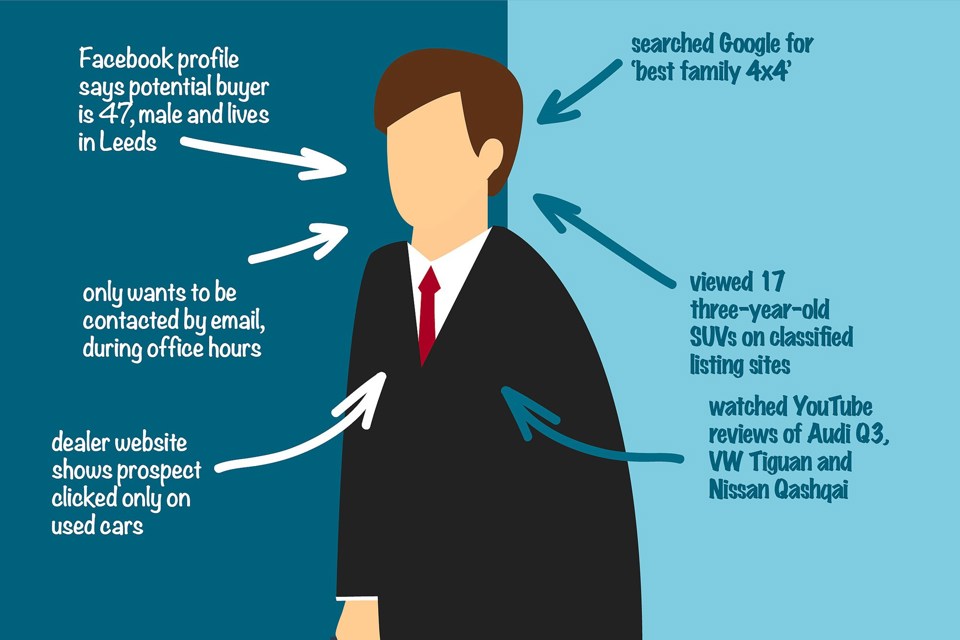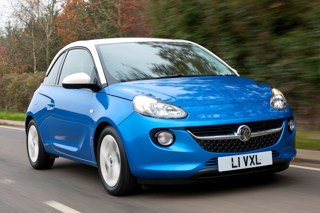Consumers expect a tailored experience at every stage of the purchase and ownership cycle – beyond simply being addressed by name in a generic email campaign.
Personalisation is about individual communications and timely information, but also includes taking cues from a person’s online search history and their social media demographics to deliver
relevant content more likely to lead to action at different stages of their journey and via various platforms.
A Google search is the starting point for most car buyers’ journeys and personalisation has been available for about three years. Remarketing lists for search ads (RLSA) changes the text in ads according to a person’s search history. The same principle applies to banner ads, where the image and message dynamically change to match an individual’s previous online activity.
Some trail-blazing dealerships are undertaking similar campaigns with Google-owned YouTube and instead of a randomly generated ad video when a consumer watches YouTube, a video review of the vehicle previously viewed would appear.
“It means the consumer is more likely to click the ad or watch the YouTube ad video,” explained Scott Sinclair, lead generation industry manager for Google. “It shows how personalisation is being delivered through search, but it is almost exclusively being undertaken by the larger groups with sophisticated digital set-ups.
Sinclair emphasised that Google ads “can be done by anyone”, but he said dealers are not taking advantage of it in big numbers.
“Most dealers drive traffic to certain areas of their website to reflect the search, but there are many more variables, such as age of car or part-exchange requirements, which are not being incorporated but would deliver a much more tailored result for consumers.”
Programmatic advertising, which delivers even more personalised experiences using real-time data and signals so different people looking for the same car for different reasons see different ads, is now creating an even more sophisticated and personalised search landscape.
Response speed is of the essence
Once a customer or prospect is on the dealer’s database, timing is everything, according to James Hill, sales director at Dealerweb: “Individual customers and prospects will respond best if they feel the dealer not only understands what they want, but when they want it.”
However, it is not just about timing sales and aftersales offers on anniversaries of the initial purchase, or offering products such as warranties and service plans that are specific and at the correct moment. Research conducted by Dealerweb in late 2016 showed consumers expect fast responses. Almost half (49%) of buyers expect a response to an online enquiry within an hour. Half of these – 25% of all vehicle buyers – expect the dealer to respond in less than 30 minutes. More than a third (34%) would take their enquiry elsewhere if there was no response in four hours, with 10% doing so in just one hour.
The findings led Dealerweb to develop React, a multi-platform software tool that allows dealers to respond to any online enquiry at any time of day, from any device, with tailored and personalised responses incorporating relevant attachments and web links.
“Customers who interact in this way demand not only a personalised response, but also a timely one. A generic ‘thanks for your enquiry’ message will now no longer cut it,” said Hill.
Facebook, according to marketers, is underused yet offers a relatively cheap and straightforward way of delivering personalised communications drawing on the platform’s wealth of demographic information, but greater results are possible when combined with the dealer’s own data.
Bluesky’s head of operations, Lauren Cooke, said: “At the most basic level, we target our advertising to relevant audiences. The best approach, however, uses the dealer’s own data. Facebook allows us to generate ‘lookalike’ lists based on customer data, targeting similar customers. These seem to perform quite strongly, delivering plenty of traffic and leads.
“The dealers who do best at this have, unsurprisingly, a good quality database to work from, and a strong understanding of the customer journey within their dealership’s unique set-up.”
Combining dealer data and Facebook demographic tools is also something Jeremy Evans, managing director of Marketing Delivery, believes should be utilised more widely by dealers.
“Currently, only one in 10 dealers are actively employing Facebook advertising as part of their social marketing strategy, which means that the vast majority are missing out on a large proportion of a relevant audience,” said Evans.
He added: “A smaller audience can be filtered according to their interaction with the dealer’s website. For example, targeting only those people who clicked on used cars, and serving them with relevant Facebook advertising tied to the dealer’s pre-owned stock.”
Marketing Delivery takes the process one step further by using additional data from customer records to identify ‘live’ used car prospects, who can then be served with data-driven marketing about particular vehicles in stock.
Such an advert may have a very small audience, but it will have remarkably high relevance and at an average cost-per-click of £0.20, it is about 80% cheaper than Google AdWords for car dealers. Such micro-audience targeting was responsible for up to 60% of dealers’ total new vehicle display page referrals between September and October 2016.
Former head of digital for Perrys Motor Sales, Lee Manning, who now works on the agency side after founding Armchair Marketing, said: “Currently, many dealers are failing to target properly when using Facebook and their data collation can be poor so they then don’t experience the return on investment they were expecting.
“The whole point of Facebook advertising for example, is that you can see huge benefits in really granular advanced targeting. We run hundreds of similar adverts at a time with differential demographic profiling to optimise and enhance the best performing demographics. It’s the best way to ensure minimum wastage for the dealer group’s spend.”
Managing and utilising customer data to communicate on a personal level and thereby boost customer service requires a flexible dealer management system that incorporates other tools, such as online booking and self-service check in, according to providers CDK.
“An integrated DMS can help dealerships gather information and accurately maintain databases, with the ultimate goal of providing staff with the knowledge and data to manage customer contact through all channels of communication,” said Phil Stubbs, CDK’s UK sales director.
Personalising aftersales
Dealers are further personalising both the car-buying and aftersales experience by using additional communication tools such as video, for example, to highlight specific features prior to a sale being finalised and heightening excitement showing a customer’s new car arriving on site as it is taken off the transporter.
Alistair Horsburgh, CEO at CitNOW, said: “There may not be time to demonstrate every feature during the customer’s initial appointment, or the demo car may not have a certain feature a customer is looking for, but a sales executive can use video to capture these during a quiet period, or when a new demonstrator comes in, loaded with niceties.
“Increasing numbers of customers will buy a coveted new model without seeing it in the flesh, so any opportunity to satisfy their intrigue with an early glimpse of the car at a motor show, factory tour or conference (within any given restrictions) will be well received. We saw a CitNOW Video Award entrant do this, and it went down well with the customer.”
Personal communication should also continue post-sale, said Horsburgh: “Every car will leave the forecourt and lead a different life to the next one, so providing a tailored approach to maintenance rather than a ‘one-size-fits-all’ solution builds trust through transparency.”
Delivering timely and relevant messages in whatever format to different generations of customers adds a further layer of complexity for dealers.
Stubbs said: “Every generation expects a high level of customer service – just delivered slightly differently. Having grown up during a technological revolution, Generation Y consumers are often ‘numb’ to blanket advertising and expect personalisation through social connections.
“As retail trends change, the level of personalisation required will too. In just 10 years’ time, most consumers will be digital natives. They will expect a certain level of personalisation wherever they shop, including having information sent to them in a form that suits them and at a time convenient to them.”
This will only be achievable with quality data that is well managed and utilised. Manning said: “Why is it that Apple can get all of our details very accurately for our £500 phones, but when buying a car the data records are commonly sketchy and incomplete?”
















Login to comment
Comments
No comments have been made yet.